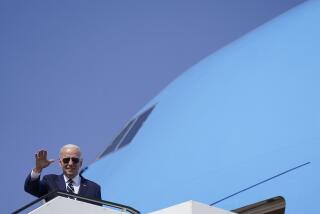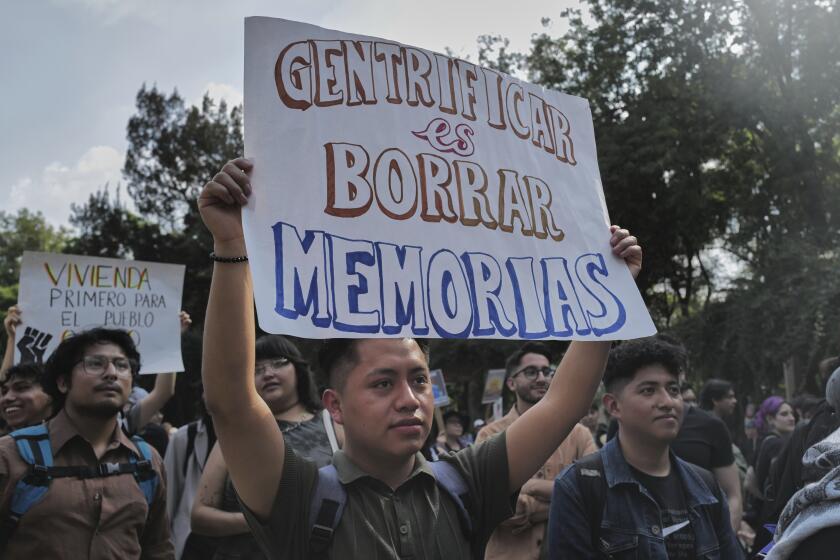Asia Looks Inward During This Summer of Discontent
- Share via
Many Asian economies are recovering vigorously, but the region’s leaders are still smarting from the deep wounds inflicted by the 1997-98 financial crisis. No longer trusting the United States or the international institutions for protection, Asian leaders are searching for home-grown defenses against the wild swings in global money markets.
Ideas on the table include an Asian Monetary Fund, a variety of regional trade pacts and even an Asian currency to lessen dependency on the dollar.
At recent gatherings of senior government officials and academic experts in Kuala Lumpur, Malaysia, Brunei and Singapore, speaker after speaker bemoaned the apparent inability of the International Monetary Fund to save collapsing Asian currencies. Equally criticized was the subsequent U.S. failure to make good on its promises to overhaul the global financial architecture. The dramatic collapse of the World Trade Organization meeting in Seattle last December is another example of global mismanagement, many Asians argue.
Beneath the economic concerns, there is a discernible pique at the United States. Some Asians are annoyed at the lone superpower’s “triumphalism” and at the boisterous U.S. criticism of “Asian values.”
Ironically, other Asians criticize the U.S. for neglecting Asia, most notably for its delayed response to the 1997 currency crisis in Thailand that sparked the regionwide downturn. Both camps contend that the U.S. is an uncertain ally.
To be sure, Asians are not blaming all of their problems on external factors. With remarkable candor, most Asian analysts recognize the flaws in their own economies. For example, many are urging domestic supervisory agencies to make local markets more transparent and competitive. They decry corruption in the public sector and unfair business practices in the private sector.
However, the Asians also want a more secure regional environment that will cushion rather than destabilize their national economies. Emboldened by the region’s $800 billion in foreign exchange reserves, Asian analysts are pondering a number of potential regional economic initiatives, most of which would seemingly exclude the United States.
Most prominent, Japan is reviving its proposal--earlier rejected by the U.S. Treasury--to establish an Asian Monetary Fund. Such a fund might promote policy dialogue among Asian economies, give Asians a voice in global financial discussions and supply financial liquidity to nations under stress.
Unclear is whether such a Japan-dominated Asian fund would complement or bypass the Washington-based IMF. The U.S. Treasury fears that easy money from an Asian fund could undermine national reform efforts and give Japan enhanced leverage throughout the region.
Most ambitious of the other proposals being made is a yen-centered currency zone, or even a common Asian currency to compete with the dollar and the euro.
In May at Chiang Mai, Thailand, Asian finance ministries and central banks agreed to establish short-term lines of credit among themselves. Privately, Asians admit that the plan lacks specifics, and that some lines of credit already exist. IMF officials are dismissing the idea. Nevertheless, the Chiang Mai agreement may be a straw in the wind.
Another sign of the search for more effective regional mechanisms is the agreement among the 10 nations of the Assn. of Southeast Asian Nations and Japan, China and South Korea to consult regularly on issues of mutual interest. This “10 plus 3” accord is a pointed alternative to the preexisting ASEAN Regional Forum that includes the United States.
Yet, there are many obstacles to cooperation in Asia. Countries vary greatly in size, economic achievement and development ideology. The many cultures have fought bloody wars among themselves.
Moreover, there is disagreement as to whether Asian institutions should chart their own course, or rather--as the U.S. prefers--adhere closely to the rules and norms of existing international institutions such as the IMF and WTO.
Should the United States be worried about resurgent Asian regionalism? Asians argue that the U.S. has lived with and even promoted regionalism in Europe and in the Western Hemisphere, and have nothing to fear in Asia.
Much would depend on the Asian agenda. Regional institutions that promote basic U.S. interests--open markets, peaceful resolution of disputes, freer politics--could be perceived as positive building blocks toward a more secure global order. Conversely, institutions that advance “Asian values”--collusive government business relations and authoritarian politics--would worry Washington.
Washington is maintaining a watchful eye, not yet persuaded that Asian talk of regional initiatives will amount to much. The U.S., however, would do well to examine the underlying motives behind this summer’s discontent in Asia. Unless Washington can strengthen the institutions and rules that govern global finance and trade, it can expect Asians to seek their own “made-in-Asia” solutions.
More to Read
Sign up for Essential California
The most important California stories and recommendations in your inbox every morning.
You may occasionally receive promotional content from the Los Angeles Times.













